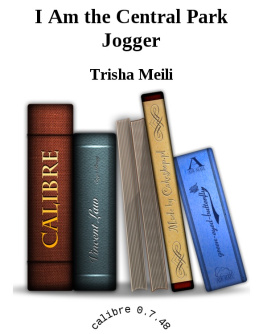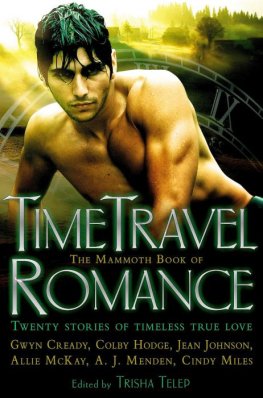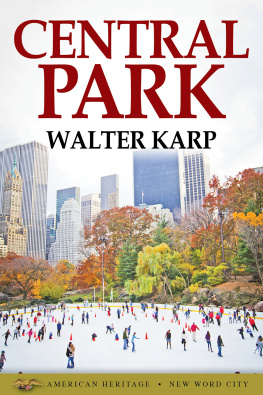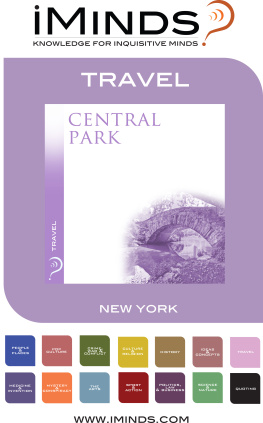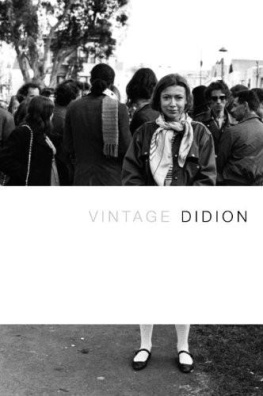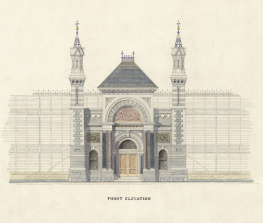I Am the Central Park Jogger
A Story of Hope and Possibility
Trisha Meili
Scribner
New York London Toronto
Sydney Singapore
SCRIBNER
1230 Avenue of the Americas
New York, NY 10020
Copyright 2003 by Trisha E. Meili
All rights reserved, including the right of reproduction in whole or in part in any form.
SCRIBNER and design are trademarks of Macmillan Library Reference USA, Inc., used under license by Simon & Schuster, the publisher of this work.
Library of Congress Cataloging-in-Publication Data is available.
ISBN 0-7432-5607-7
To all those who have helped and
continue to help me heal
Contents
How could we forget those ancient myths that stand at the beginning of all races, the myths about dragons that at the last moment are transformed into princesses? Perhaps all the dragons in our lives are princesses who are only waiting to see us act, just once, with beauty and courage. Perhaps everything that frightens us is, in its deepest essence, something helpless that wants our love.
RAINER MARIA RILKE: Letters to a Young Poet
Translated by Stephen Mitchell
Prologue
"I've got news," Elizabeth Lederer, the chief prosecutor in my case, said over the phone. Her voice was controlled; I could tell she was trying to hide her emotion.Her call came in early June 2002, when I was more than halfway through the writing of this book, and left me too stunned to respond. Matias Reyes, a convicted murderer and serial rapist serving thirty-three years to life, claimed he alone had dragged me into a ravine, raped me, and left me for dead. DNA evidence placed him at the crime scene. He could not be charged because the statute of limitations in the case had expired.As the ensuing investigation wore on, I struggled to understand the implications. We had always known there was another involved in the attack, so that part of his confession merely told us his identity. But if he was telling the truth that he had acted alone, then the five who had been convicted for the crimes against me were innocent. Questions assailed me. Could Reyes be believed? What if the wrong people had gone to jail? To what degree would I again be involved if there was a new investigation?What I thought was a closed chapter in my life was reopened. Headlines screamed "Jogger" once again. I was living the horror as I had not lived it before, since I had been beaten into a coma the first time around.Reyes became real to me in a way the five had not. I didn't want to see him in the paper, hear him talk on the television news. He had murdered a woman and raped more, forcing some at knifepoint to make a choice: "Your eyes or your life." How the hell did I survive?But through all the recent developments, one thing remained constant: there is nothing I can add or contribute to what happened that night. The traumatic brain injury inflicted on me leaves me unable to remember anything of the attack. In a way, that makes me feel helpless. Not as a victim, but as someone who wants to contribute to the truth. Part of my being at peace with the events of April 19, 1989, however, is accepting that I will never know.On the morning of December 19, 2002, New York State justice Charles J. Tejada announced his decision to vacate the convictions of five young men Antron McCray, Raymond Santana, Yusef Salaam, Kevin Richardson, and Kharey Wise for various combinations of robbery, riot, assault, sexual abuse, rape, sodomy, and attempted murder in Central Park that April. New York's Criminal Procedure Law Section 440.10 (1) (g) provides that, among other criteria, if "new evidence" is such that it would probably have resulted in a verdict more favorable to the defendant if it had been received at trial, then a court may vacate the convictions. After the judge did just that vacated the convictions the Manhattan District Attorney said he would not seek a retrial.But these developments have not changed my purpose in writing this book. It has taken me fourteen years to go public with my story, and that story isn't about the justice system, about who attacked me, or whether one confession or five were true. It is about reclaiming a life,
my life.I built a life until I was twenty-eight, was struck down, and so had to build another. Two lives, and I'm proud of both. My book is about something I did, not what was done to me. I needed help, and my story is also about the nature and effect of that help.I offer my story and the lessons I learned as an invitation to heal.
Preface
"I'm Okay"
Shortly after 9 P.M. on April 19, 1989, a young woman, out for her run in New York's Central Park, was bludgeoned, raped, sodomized, and beaten so savagely that doctors despaired for her life and a horrified nation cried out in pain and outrage.I am that woman, until now known only as the Central Park Jogger, and this is my story.For fourteen years I've been reluctant to tell it, despite repeated entreaties from magazines, book publishers, and movie and television studios. I was counseled and believed that only by remaining anonymous could I return to the normality of my life before the attack. Well, I'm "normal" now; I'm okay. And many other factors have convinced me that it's time to write about my experiences under my real name. But I've not "returned" to the young, ambitious, workaholic associate of the Energy and Chemicals Group in the Corporate Finance Department of Salomon Brothers. My physical and cognitive abilities are different. Different things matter to me. What I value is different, though my values haven't changed. I see the world through different eyes and am more appreciative of the people, places, and life around me.I went for a run and had my life interrupted. No one comes that close to death without being transformed in some way, and I've learned to accept the changes, both positive and negative. After April 19, the world reached out to me because I was so brutally attacked, and I benefited profoundly from the outpouring of support. Now I'm reaching back out to the world. I'm proud to tell you that my name is Trisha Meili. To be able to write this at all represents an important breakthrough in my healing.
* * *
Mention the Central Park Jogger to virtually any adult in New York City, and to millions across the country, and they'll relive their sense of shock at what happened to her, even fourteen years later. I'm not sure why this is so. In the intervening years, there have unfortunately been innumerable beatings and countless rapes (during the week I was attacked, twenty-eight other rapes were reported across the city), yet my case is remembered while the others are forgotten by all but the victims, the victims' immediate families and friends. Perhaps it is because this assault revealed the basest depravity human beings are capable of the attack was believed to have been committed by a group of teenagers between the ages of fourteen and sixteen, out only to have some "fun" and people shuddered to realize such cruelty exists in our exalted species. Perhaps it is also the randomness of the attack (Tom Wicker, in a
New York Times column, called the act "inexplicable"), the sense that "there but for the grace of God go I." And perhaps it is because people wanted to affirm that there is a better, higher part in the vast majority of us and could display that nobility in their desire to comfort me. That comfort, expressed through prayer, through letters, through gifts, through kindness, played an essential part in my recovery. The love and support I received from so many surely motivated me to keep pushing ahead and moving forward.For more than ten years I've been looking for a way to turn what was truly horrible into something positive, to use my experience as the basis for inspiration, not pity. As it turned out, the attack, meant to take my life, gave me a deeper life, one richer and more meaningful than it might have been. A newspaper reporter once dubbed me "Lady Courage." I was proud of that description, a recognition that what I was going through wasn't easy; it took hard work to recover; and even today the process continues. It took courage to give up my privacy. I never intended to become famous or an inspiration. I am an ordinary woman who experienced an extraordinary trauma. But as the years passed, the ideas I wanted to express became clearer in my mind, continued to nag at me, and I felt compelled to take the risk of stepping out of my privacy. My story is not essentially about violence in the cities nor the success or failure of our criminal justice system. Nor is it about vengeance or hate. Rather it is about the capacity of the human body and spirit to heal.
Next page
